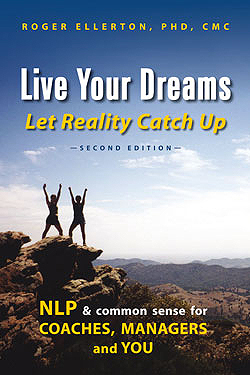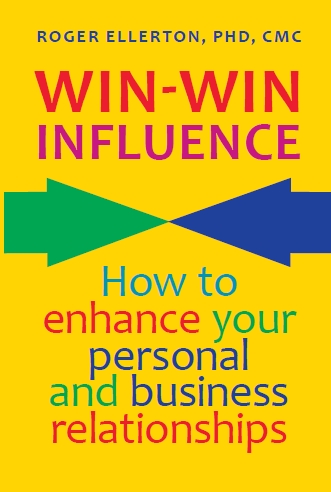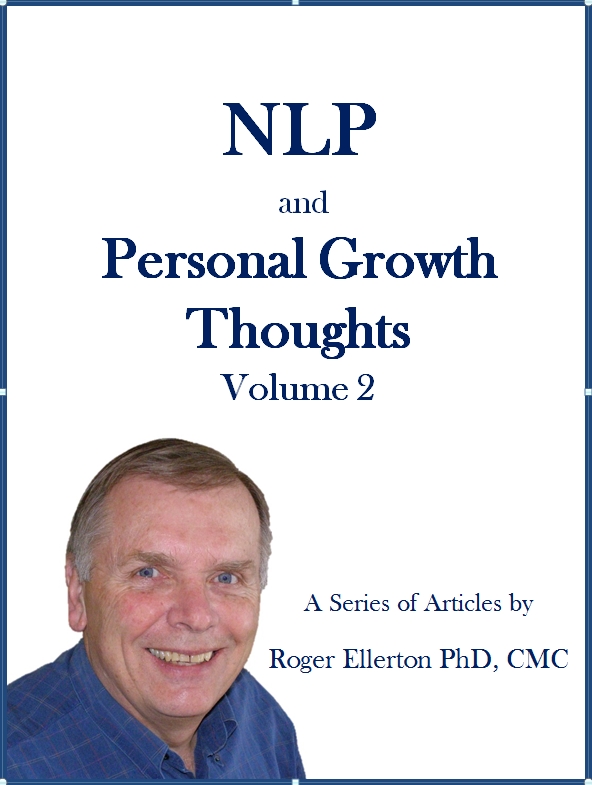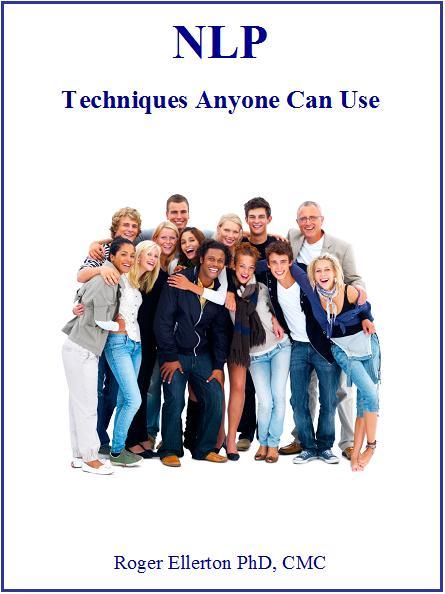Time Line TherapyTM for a Quantum Age
By Louise LeBrun and Roger Ellerton Phd, ISP, CMC
This article may not be republished without written permission from Roger Ellerton/Renewal Technologies Inc. If you republish this article without permission, you will be in violation of copyright law and sent an invoice. You may share this and other pages with your friends by linking directly to this page from your website or blog.
This article originally appeared in the Journal of the Time Line TherapyTM Association.
As with many who both use and teach Time Line TherapyTM (TLT), we are trained in a variety of other methodologies that support personal growth. We have enjoyed reading about your work, the signatures you leave and the contributions that you make to the greater body of knowledge with your own personal "take" on the what's and how's of TLT. (Witness the recent articles by Dr. Eric Robins which relate to TLT and Pranic Healing.) And, after all, is that not what NLP and TLT are about - creating a platform on which to stand and from which to move forward; learning from each other, making it up and creating new processes as we go along! It is this willingness to play with and expand into our own experience that has kept NLP and TLT so powerfully present in changing people's lives - including our own. This allows for an iterative process - like activating neural fields - with each experience leaving us more available for and open to the next. We, like many of you, have easily integrated TLT with these other processes, building on the high-level process of TLT and creating a whole that has become greater than the sum of its parts. We would like to share some thoughts about this experience with all of you.
Our areas of interest and expertise include personal and professional/business development, creating the need for us to work with our methodologies in a way that is safe and acceptable to a broad client base, and one that is fairly conservative in nature. In addition to NLP and TLT, we have developed a range of programs that include the latest information available on quantum biology, bioelectromagnetics and brain research. We offer our clients opportunities for change that are rapid, respectful, comfortable and effective.
For purposes of this article, we will focus our attention on the process of using TLT in groups. Although we also use the following distinctions when working with individuals, the power of the process is readily evident when working with a group since behavior is highly contagious. As such, we prefer to create a 'thought virus' that works with us instead of against us!
We have, over time, become aware of how powerful TLT is when tied to an awareness of movement of energy in the body. We have created a context within which we offer TLT that has proven to be very effective not only in the clearing process itself but in engendering a joyful willingness in our participants to continue to use the process when on their own. When delivering a TLT certification training or when offering our version of the two-day introduction to TLT, we take time at the front end of the process to provide information that structures a context that will support our participants in letting go of culturally conditioned preferences tied to associations to nominalizations. In plain English, that means:
We start by exploring the nature of human beings as individual living systems forming part of larger living systems, constantly seeking ways and means of self-expression as distinct individuals yet remaining part of a larger whole. We look at: what is an emotion? What goes on in the body when we are experiencing an emotion? What is the purpose of an emotion? What are our rules about emotions? What are the emotions attached to the rules themselves about the emotions?
Using readily available information from quantum biology, bioelectromagnetics and brain research (some of our personal favorites include and are not limited to Deepak Chopra, Candace Pert and Valerie Hunt), we explore the function of the central nervous system and how information is transmitted through the living system that we call the body. We also discuss the role of the unconscious mind (body/mind) in the processing of emotion (energy), and the natural ability of the body to metabolize energy without needing the involvement of the conscious mind (content/linguistically structured thought.)
We explore the notion of nominalizations and how we experience the effects of nominalizations through our judgments, which produce an effect in the body. We move our clients away from the nominalization of 'emotions' and towards the nominalization of 'energy'. Although both of these are nominalizations, that of emotions has associated to it powerful, conditioned societal preferences that in and of themselves create emotional responses in the body. As a nominalization, energy has either no particular associations or has positive ones, i.e. flick the switch and energy turns on the lights.
We create a metaphor for the movement of energy in the body as being akin to the blinking green light on your computer. When the green light is blinking, the computer is 'processing information'. When energy is moving through your body (i.e., an emotion), your body is processing information. Making judgments about the movement and attempting to shut it down is like determining the green blinking light on the computer to be an indication that something is wrong, and unplugging the computer. When you plug it back in, you have to repeat the process, only now with trepidation.
Our clients come to relate to the following: emotions are an indication of movement of energy in the body. Energy is the Life Force: low energy equals low Life Force, therefore energy (emotion) is a good thing! The energy is moving in order to process information. The information is neither good nor bad, it is information that, if allowed to be dumped into the larger system, will integrate into that system and support expansion of the system.
We also help our clients understand that, like your body knows how to metabolize your lunch and turn it into the appropriate body tissue to support and sustain life without any direction from the conscious mind, it also knows how to 'metabolize' the information of what we call an emotion and turn it into something appropriate that will support and sustain life - also without the involvement of the conscious mind. To resist the movement of the energy (emotion) in the body is to resist the transfer of the very information that is required to sustain wellness in the body.
With this as a context, we then introduce the notion and procedures of Time Line TherapyTM, as developed by Dr. Tad James, and provide information to attest to the power of and success of this process. Because of the culturally conditioned associations to the nominalization 'therapy', we continue to refer to the Time Line process as a powerful tool to support growth and change, and begin to leave off the reference to 'therapy'. Our intention is to create a context that supports each person as being intrinsically powerful and competent; and as having arrived as magnificent, whole and integrated, with an innate ability to return to that natural state. For many people, the nominalization of 'therapy' has come to be associated with notions of being broken and needing to be fixed; of one up, one down; less than; needing someone outside of us in order to heal; not to mention the sense of shame and secrecy often attached to the need for therapy. We have found that these interpretations only serve to impede the change process. It is not that they are good or bad; right or wrong; they are simply not useful in the change context we create.
When working with TLT, we do not talk about clearing negative emotions but of releasing stored residual energy into the larger system, for integration and wholeness, recognizing that all information has a purpose. The natural state of the body is to move towards health and wellness (wholeness and integration). We describe these stored residual charges to our clients as being like flags. For every experience where the learning opportunity has gone unprocessed, the learnings continue to be held, awaiting the opportune moment to become part of the larger whole. Given that the unconscious mind recognizes that most of the time we can't remember where we were yesterday at 2:00 p.m. without effort, the body attaches a signal to these particular events to make sure that they are not lost. The signal is the energetic charge, which acts as a flag to draw our attention to that particular event. Our clients will often have an image of each clearing resulting in their collecting yet another flag, as an indication of growth and success. The only purpose that the energetic charge carries (i.e. the emotion) is to act as a marker - an indicator of the treasure that awaits. The treasure is in the information; the energetic charge is the X that marks the spot. In this way, the fear that is often associated to the idea of releasing emotions that likely have judgments attached to them, is diminished if not completely eliminated.
When using the nominalization of energy rather than emotions, there is neither requirement for nor value in the notion of positive or negative. It simply is. It is much easier for our clients to open themselves to information than it is for many to open to their emotions.
As we all know, Time Line TherapyTM works. What we have discovered is that Time Line TherapyTM, supported by nominalizations and linguistic structures that trigger a more neutral experience for our clients, allows the entire process to be embraced as play and becomes their invitation to....
They said, we are afraid.
Come to the edge, he said.
They came, he pushed them ...
and they flew!
Guillaume Apollinaire
Author: Roger Ellerton is a certified NLP trainer, certified management consultant and the founder and managing partner of Renewal Technologies. He is the author of the book Live Your Dreams Let Reality Catch Up: NLP and Common Sense for Coaches, Managers and You.
Copyright © 2000, Renewal Technologies Inc. All rights reserved.








